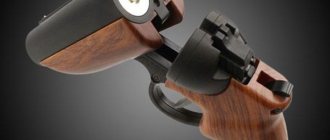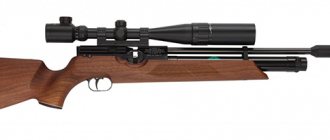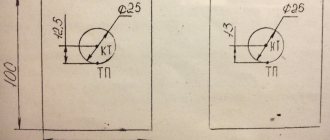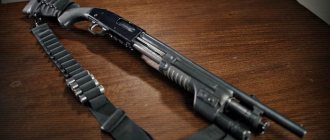The presence of weapons among the Russian population is a fact that does not require proof. The fact that weapons are for personal use and stored at home is due to the fact that there are still professional hunters, there are many amateurs who perceive hunting as an exciting leisure activity, there are those who are awarded personalized weapons for certain merits, those who perceive the presence of weapons at home as a protective factor, there are, finally, athletes (both professional and amateur) and gun collectors, for many of whom this activity is an extremely important part of life.
Why is it necessary to know the rules for storing weapons?
Having a gun at home is a responsible step and a certain risk associated with the possibility that someone else might take possession of it and use it.
This is not necessarily a criminal. Such a dangerous object in the hands of a child or an emotionally unstable person can also lead to tragedy.
To prevent this from happening, you must follow a number of rules determined by the legislation of our country.
Without compliance with these standards, the very procedure for obtaining official papers in order to buy a weapon and have it at home is virtually impossible.
Owner location
The legal documents of the Russian Federation indicate that weapons and ammunition must be stored at the place of residence of their owners, observing conditions that exclude the possibility of access to them by outsiders, and also ensure their safety and compliance with security measures.
Since the place of residence in a particular time period can be both a place of permanent residence and a place of temporary residence, such standards must be ensured in any place where there are weapons.
Not everywhere, of course, it is possible to use a strong safe (for example, when hunting), but you should always worry about the greatest reliability of the weapon “shelter”, keeping in mind your serious responsibility and the prospects of severe punishment when strangers use such dangerous objects.
Interesting material about safety measures when shooting from the Ministry of Internal Affairs.
Rules for wearing a balloon
According to the established rules for carrying pneumatic weapons, citizens can take the COI with them to any place. But using the product in a populated area, for example, in public transport or at public events, is illegal.
Carrying air guns without a license is permitted after they have been discharged. The KSOI can be put into a holster. Federal Law No. 150 does not establish any special restrictions for products less than 3 J. However, “waving” a pistol in front of people is unnecessary. Police officers will consider such actions hooliganism.
Carrying air guns without a license is permitted after they have been discharged. The KSOI can be put into a holster. Federal Law No. 150 does not establish any special restrictions for products less than 3 J. However, “waving” a pistol in front of people is unnecessary. Police officers will consider such actions hooliganism.
Conditions for storage at your place of residence
See photo:
Storing weapons at home
Weapons should be stored in special metal safes (cabinets, drawers). They must be made of very durable materials; boxes made of wood and lined with iron are allowed, although this design is rarely used today. A gun safe should have a very secure lock.
However, in the above-mentioned Instruction of the Ministry of Internal Affairs of 1999, together with those adopted in the named legislative acts, there are additional storage rules:
- The room in which the gun safe is located must have an alarm system (security and fire), a metal door that is attached to an additional frame and is closed with latches.
- If the room is located on the last or 1st floor, then an iron grille must be installed on the windows of the room.
- If an alarm cannot be installed, then the gun safe is secured with powerful steel bolts (the bolt thread in diameter is at least 16 mm), and the bolts themselves are 2 or more (usually 4).
Operation, maintenance and storage of pneumatic, p/v, hose pneumatic pumps
2. I-20A mineral oil (oil for sewing machines) is poured into the receiver of the new gun.* The amount of cm3 of oil approximately corresponds to the length of the gun in centimeters divided by 10. The pump is turned over with the thread up, the piston is pulled down to the selected length, oil is poured into the pump, the gun is then screwed onto the pump and turned over to pump. During active hunting, 1 cm3 of I-20A mineral oil is added to the receiver once a month. There is no need to fill the new pneumatic import with oil. Silicone oil recommended by the manufacturer is added to the pneumatic import receiver.**
3. The PO gun is loaded and unloaded only under water!
4. You can only shoot at a clearly visible target.
5. After the end of the hunt, the gun and harpoon are washed with warm fresh water and dried in the shade in the breeze. Leaving an inflated gun in the sun is dangerous! If hunting on fresh forest lasts several days, you can wash the gun once after the last hunt. When hunting at sea, be sure to wash the gun after each hunt, first in a weak solution of baking soda, then in clean water, wiping it with a rag in the water. After each hunt (and not before!) it is necessary to inspect the gun, check the operation of its mechanisms, the reliability of the line and the straightness of the arrow. If necessary, adjust, repair or replace faulty components.
6. Before off-season storage, the gun and harpoons should be thoroughly washed, dried and inspected. If necessary, adjust, repair and replace mechanisms and other components. Reduce the pressure from the receiver to half of the working pressure. Place 5-10 drops of I-20 mineral oil into the muzzle (silicone oil recommended by the manufacturer is placed in the pneumatic import). Lubricate the outside of the gun and harpoons with I-20 oil and wipe with a rag. After this, wrap the gun in a clean, dry cloth or put it in a case.
In pneumatic and semi-automatic guns, during off-season storage, be sure to insert the arrow into the muzzle once a month and make 3-5 reciprocating movements 2-3 cm deep into the barrel. Otherwise, within six months the piston will “stick” to the muzzle and it will have to be torn off, and this can lead to destruction of the piston.
Storage in close proximity to heat sources is not recommended.
Check rubber seals for leaks.
Pour water into the bathtub or basin. Remove the injection valve plug from the gun. Place the inflated, unloaded gun in the water. Air bubbles will indicate where the connection is leaking.
Features of servicing pneumatic vacuum guns.
Before each hunt, lubricate the harpoon shank with Litol-24 oil.***
Features of servicing hose hydropneumatics.
There is no need to pour oil into the receiver! It is recommended to lubricate the outside of the hose with Litol-24 oil
Before each hunt, lubricate the harpoon shank with Litol-24 oil.
Checking the vacuum cuff in the p/v and the cuff holding water in the hose g/p barrel
Insert the arrow into the barrel 3/4 of the arrow length and release. If the arrow comes out of the barrel under pressure, the cuff is working.
Fill the barrel of the hose gun with water, wipe the muzzle dry and insert the arrow into the barrel. The absence of water flowing from the muzzle indicates the serviceability of the cuff.
Regardless of design
Contact of underwater guns, harpoons and underwater gun pumps with sand leads to expensive repairs to the gun or pump!
* For year-round operation, ATF (DEXRON) group oils are recommended.
** In pneumatic import, high-quality oil is not always found. Details here: https://apox.ru/forum...indpost&p=54300
*** Instead of Litol-24 oil, you can use CV joint oil, graphite or copper grease.
Added 06.11.10: Regarding the question of the need to rinse the gun with fresh water after hunting - I quote the paragraph from the operating instructions for OMER Cayman guns - note - not even pneumatic guns, but crossbows (!)
MAINTENANCE AND OPERATION OF RUBBER GUN
Despite the fact that stainless steel is used to manufacture the gun, it is recommended to wash it at least once a week in fresh water, thoroughly rinsing the entire gun, including the internal parts of the trigger mechanism...:
Modified on June 30, 2012 by scarabey Added a spoiler
How to buy or make a gun cabinet?
Mandatory requirements for it are described in detail in the legal documents already mentioned.
They are:
- The material of manufacture is high-strength, usually metal; it is possible to use wood, which is upholstered with iron.
- The thickness of the safe walls is from 2 mm or more.
- The thickness of the walls when storing cartridges is from 3 mm or more.
Watch a video of shooting techniques from a traumatic pistol here.
This cabinet should be placed in the room no closer than 1.5 m from the doors and 0.5 m from the windows. If cartridges are stored in the cabinet, then it must also be located no closer than 1 m from heating devices.
From these regulatory documents and practices it follows that:
- The cabinet (safe) for storing weapons must still be metal with a reliable lock that ensures the safety of the weapon.
- If you plan to store cartridges, the thickness of the metal walls must be at least 3 mm.
- The safe must be correctly positioned in relation to doors, windows and heating appliances.
- You need to attach the safe to the wall using metal bolts.
Speaking of the thickness of the walls of safes: unfortunately, many imported metal safes of well-known brands, which have good storage security parameters, have walls that are thinner. This should be taken into account when purchasing a gun cabinet.
Pneumatic storage rules
They are determined by the type of weapon:
- These rules for hunting pneumatic weapons (25 J and less) are determined by the Law “On Hunting”. It should be noted that persons with hunting licenses have the opportunity to purchase and store this type of weapon.
- Storage of sports pneumatics (over 7.5 J and more than 4.5 mm) is strictly prohibited outside registered sports facilities.
- However, if the pneumatic is of lower power and caliber size, then there are no special requirements for its storage. Such weapons do not require registration with law enforcement agencies. However, you still need to remember about its potential danger.
Very interesting material about the VKS Exhaust sniper rifle, 12.7 mm caliber.
Read about a homemade air rifle here.
See the bullet catcher for pneumatics at:
Documents for carrying and transportation
Before leaving the house, the owner is required to take several documents:
- Identification.
- Technical data sheet and certificate of conformity for the device.
- License, permit, as well as a hunter’s ticket or sports passport - for rifles from 7.5 J.
Persons over 18 years of age can carry and transport pneumatic guns.
Is it possible to transport air guns across the border on a plane or train? Yes, but it is not recommended to part with the device. The owner must have compelling reasons for such transportation.
Punishment for illegal possession article of the Criminal Code of the Russian Federation
Legal punitive measures will be very severe (Article 222 of the Criminal Code of the Russian Federation), their options are:
- forced labor – up to 4 years;
- restriction of freedom up to 3 years;
- arrest up to 6 months;
- imprisonment for up to 4 years, plus a fine of up to 80 thousand rubles, either in the amount of wages or other income for up to 3 months, or without a fine.
However, this punishment does not apply to civilian smooth-bore long-barreled weapons.
The following options are possible regarding this:
- fine from 3000 to 5000 rubles. and confiscation of weapons;
- arrest from 5 to 15 days and confiscation of weapons.
Procedure for purchasing pneumatics
License
To obtain a license legalizing the purchase and carrying of pneumatic weapons with a muzzle energy above 7.5 J for sports activities, it is necessary to submit an application to the sports federation that has received the appropriate letter of credit. Citizens who buy weapons for the first time that require licensing must undergo special training. An exception is made only for those who already have such permission, serving in state paramilitary organizations, holding military or special ranks. A license is issued after mastering the training, testing knowledge, dogmas of the safe use of weapons, and every five years a similar exam is repeated again.
Cases when a license is not issued:
- citizen has not reached the age of majority
- there is no medical report excluding medical contraindications
- felony conviction
- serving a sentence for a crime
- repeat offense
- lack of permanent residence
- lack of documentation confirming successful completion of training
- deprivation of the right to purchase weapons in court
- registration in a health care institution due to mental illness, alcoholism, drug addiction.
Registration and permission
Registration of air guns after purchase
The acquisition of weapons is carried out through the mandatory procedure of obtaining a license. The purchase is subject to mandatory registration within two weeks. To register, you need to contact the Ministry of Internal Affairs, where the purchase license was issued, present documentation confirming the legality of the purchase, and the purchased product itself for inspection.
Upon completion of registration, a permit is issued establishing the legality of its storage for a period of 5 years. This time can be extended, if necessary, by contacting the same authority three months before the permit expires.
Non-residents of the Russian Federation
To prevent foreign citizens from having unnecessary misunderstandings with law enforcement authorities, it is necessary to know some postulates regarding the acquisition of weapons in the Russian Federation by non-residents. Such citizens have the opportunity to purchase weapons in the Russian Federation under a license issued by the internal affairs authorities on the basis of a petition from the diplomatic mission of foreign states in the Russian Federation, of which they are citizens.
Such a permit provides for the export of purchased weapons out of the country within up to five days.
Weapons with muzzle energy up to 7.5 J, the caliber of which does not exceed 4.5 mm, can be purchased by foreigners without licenses on the territory of the Russian Federation. Taking these requirements into account, you will be able to avoid litigation, which is often unpleasantly tormenting to the nervous system.
All about Hatsan rifles. This video shows the first shots and review of the Hatsan 125 sniper air rifle. Features overview. How to choose and buy an air rifle without a license? The answers in this article will help resolve this issue.
Punishments
- For non-compliance with the system of completing documentation related to purchased weapons, or using them to cause harm to the health or life of citizens, liability is provided within the framework of the law.
- Installation of devices for silent shooting. Administrative punishment is provided for the illegal act of installing silencers on weapons. For this action you will be issued a fine in the range of 2-2.5 thousand rubles.
- Manufacturing, distributing, or transferring pneumatic weapons outside the law is punishable by a fine of 1.5-2.0 thousand rubles.
- Deviation from deadlines for completing documentation. For violation of the registration deadline, this also applies to your re-registration, or rather, the weapon will be registered and penalties in the amount of 300-1000 rubles will be applied.
- Sending weapons in violation of transportation rules established by law is punishable by a fine. In the first case, the fine is 500-1000 rubles with or without deduction. If the transportation rules are violated, you will have to pay a fine of 1000-1500 rubles. If the rules of use are recklessly violated, you will be fined 1,500-2,000 rubles and, possibly, the weapon will be confiscated, in addition to its cartridges.
- Shooting in unauthorized places, for example in the city, is punishable by a fine and possible confiscation of weapons and ammunition.
- Criminal liability. Because pneumatics are capable of causing injury to a person, then such an act will entail criminal liability. Committing robbery using such weapons, according to Art. 162 of the Code will lead to criminal penalties.
Do not forget about the folk wisdom that says that even a gun hanging on the wall can fire. Be careful when using weapons and letting them into your life. Such “toys” should be stored exclusively in a secure safe with limited access to prevent their use by unintelligent children or frivolous guests. Responsibly approach the preparation of documentation related to the legality of the acquisition and remain clean in the face of the law.









